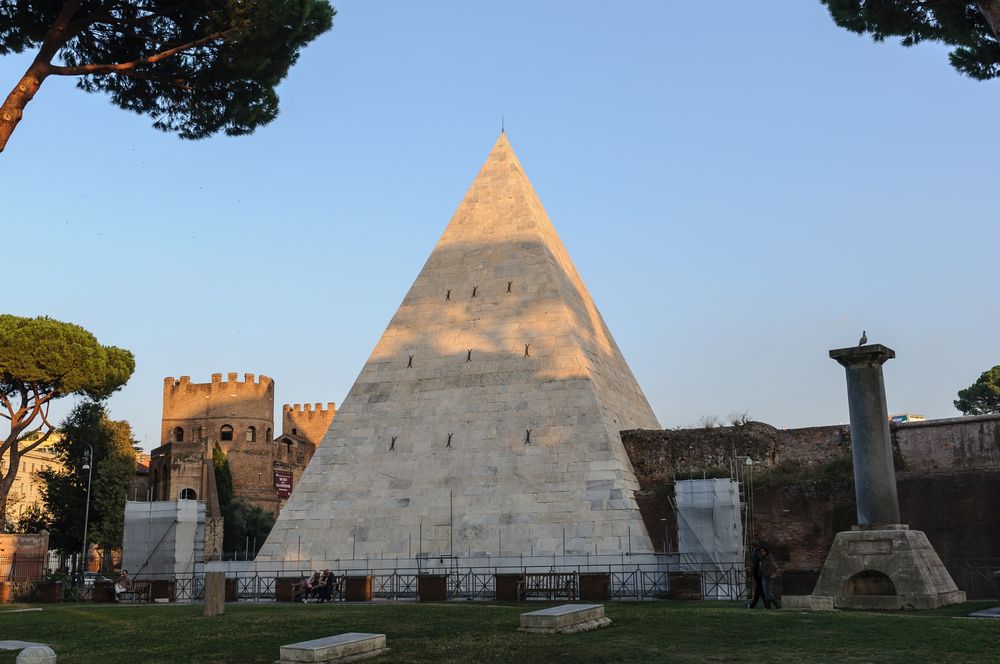Summary
- The Amphitheatrum Castrense was built in the 3rd century AD and later incorporated into the Aurelian Walls of Rome for defense.
- The complex was part of the larger Imperial villa complex, Horti Spei Veteris, which included a palatial villa and the Circus Varianus.
- Today, visitors can see the ruins of the Amphitheatrum Castrense on the first and third Saturday of the month, but only the lowest story of the amphitheater remains.
It should come as little surprise that a city the size and importance as Rome had more than one amphitheater. The Colosseum is the largest ancient amphitheater ever built and is one of the top attractions in Rome today. But there is another in Rome. The Amphitheatrum Castrense was built later in the 3rd century AD.
The Amphitheatrum Castrense was later incorporated into the hurriedly-built Aurelian Walls of Rome. It was not the only structure to find itself part of the ancient walls; see how the Romans absorbed the Pyramid of Cestius into their walls as well.
The Short History Of The Amphitheatrum Castrense
The Amphitheatrum Castrense (Amphitheater of Castrense) was built by emperor Elagablus (he reigned from 218 to 222). The word "castrum" in its name originally meant "(army) camp" but seems to have later come to refer to an "imperial dwelling."
The complex was built between the end of the 2nd and the beginning of the 3rd century. It was a regular ellipse measuring 88 x 76 meters (289 x 249 feet).
- Built: Circa 218 to 222 AD
- Part Of: Horti Spei Veteris Imperial Complex
It was part of a larger Horti Spei Veteris, the Imperial villa complex that the Severan dynasty emperors built. The complex included a palatial villa and the Circus Varianus (the ruins of the Circus Varianus are still visible today).
There was once a 300-meter (yard) covered hallway leading from the amphitheater to the circus (its ruins are also visible).
The Horti Spei Veteris was an important palace estate in Rome that grew to be the residence of the Emperors on Esquiline Hill. It covered an area of around 12,000 square meters.
In the 18th century, a hypogeum was found under the amphitheater with many large animal bones (discover the impressive hypogeum of the Colosseum with a special tour).
Crisis Of The Third Century & Absorption Into The Aurelian Walls
When the Amphitheatrum Castrense was built, times were changing in the Roman Empire. The long period of the Pax Romana came to a screeching halt in 235 when Emperor Severus Alexander was assassinated by his own troops.
The empire was then pressured with massive invasions from the Sassinads in the east and the barbarians in France.
- Crisis of the Third Century: 235 to 284
The Roman Empire fragmented. It suffered crippling military defeats, civil wars, peasant rebellions, economic collapse, plagues, and the debasement of the currency.
This was almost the end of the Roman Empire, but a series of military victories by Aurelian and the ascension of Diocletian with his reforms stabilized the empire by 284 bringing it back from the brink and giving it a new lease on life.
- Inclusion Into The City Walls: 271 - 275
Facing the new reality of barbarian invasions and decreased security in the empire, Emperor Aurelian hurriedly built the impressive Aurelian Walls to defend the city of Rome (previously Rome was so secure it didn't need walls).
The Aurelian Walls were built from 271 to 275 AD and to aid in their construction, they incorporated as many existing structures as possible (the walls also cut through the Circus Varianus). At this point, the Castrense Amphitheater ceased to be used as a venue for spectacles and became a bastion.
In the 16th century, the remains of the second story were demolished to aid in defense.
Visiting The Amphitheatrum Castrense Today
The Amphitheatrum Castrense is better preserved than many other structures of the Imperial Villa complex thanks to its inclusion in the walls. That being said, there isn't that much left of the ancient amphitheater. It was once three stories high, but only the lowest story survives.
Yet more of the amphitheater is preserved than meets the eye as much it is now underneath the present-day street level.
- Admission: 5.50 Euro ($6.50) - Plus 2 Euro booking fee
- Opening Hours: First & Third Saturday Of The Month
Visitors can see its ruins at the Via Nole between the Aurelian Wall and the Basilica of Santa Croce in Gerusalemme. The site is only open to the public on the first and third Saturday of the month.
It is required that visitors make a booking in advance (call +39 06 39967700 for the booking). The tour to the amphitheater is part of visiting the larger imperial complex.
There are many excellently preserved Roman amphitheaters to explore, and a few of them remain in use today (e.g. the Arles Amphitheater in France). Many of the amphitheaters were converted into defensive structures towards the end of the empire and in the Middle Ages.
The Amphitheatrum Castrense only survived around 50 years before becoming a defensive structure.





